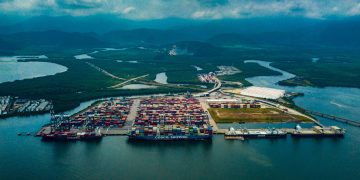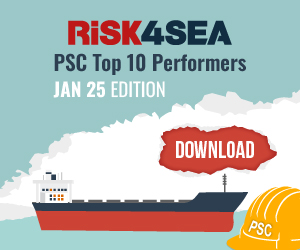Cyber incidents is the top global risk for 2025 and by a higher margin than ever before – making it the fourth year in a row that cyber is ranked as the number one risk across industries, according to the Allianz Risk Barometer 2025.
Top global risks overview
Cyber incidents consolidate their position as the most important risk – with 38% of responses, a record 7% points ahead. Notably, the risk impact of new technologies and developments in artificial intelligence (AI) is a new entrant in the top 10 global risks at #10. Closely interlinked to cyber, business interruption is ranked #2 (31%), just ahead of another related risk, natural catastrophes at #3 (29%).

Climate change is another standout result in 2025 making it the biggest mover in the top 10 risks globally, climbing two places to #5 (19%), achieving its highest-ever position in the 14 years of the survey.
As climate- and nature-related risks continue to rise, the financial implications will become increasingly pronounced, whether it concerns managing climate change transition risk, mounting costs from regulatory compliance on disclosing physical climate risks, or operational disruptions caused by more extreme weather events and ecosystem degradation.
- Companies identify cyber-attacks, especially data breaches, as their top business concern for the year ahead (38% of overall responses).
- Business interruption remains #2 (31%). Natural catastrophes ranks #3, while the closely interlinked peril climate change is the biggest riser compared to 2024, moving from #7 to #5.
- Geopolitical turmoil, impact of government and regulatory change, and fear of trade wars remain high on the business agenda.
- Leading the business risk rankings in the United States are cyber, natural catastrophes and business interruption
Reflecting regulatory developments for sustainability and emerging technologies, changes in legislation and regulation (25%) also drew a bigger response this year, retaining #4 globally.
What stands out in this year’s Allianz Risk Barometer is the interconnectivity of the top risks. A change in one – or indeed a mitigating action – might have a knockon effect on another, and another.
…said Michael Bruch, Global Head of Risk Advisory Services, Allianz Commercial.
#1 Growing concern for cyber risk
Cyber incidents such as ransomware attacks, data breaches, and IT outages are the top global risk for 2025, marking their fourth consecutive year at the top. As well as being the top risk in countries such as Australia, France, Germany, India, Italy, Portugal, and the UK, cyber is also the new top risk year-on-year in Brazil, Colombia, Philippines, Morocco, and South Africa.
It also ranks as the top risk for large, mid-sized, and smaller companies and is now ranked #1 by respondents in industries ranging from aviation to chemicals to entertainment. Financial services, media, professional services such as legal, technology, and telecommunications sectors also cite cyber as their risk of most concern.
For many companies, cyber risk, exacerbated by the rapid development of AI, is the big risk overriding everything else.
…said Rishi Baviskar, Global Head of Cyber Risk Consulting, Allianz Commercial
Cyber is likely to remain a top risk for organizations going forward, given the growing reliance on technology, and as AI is incorporated into a growing number of products and services. Furthermore, cyber also overlaps with several other highly ranked risks in the Allianz Risk Barometer.

According to respondents, cyber incidents are the cause of business interruption companies fear most. It also ranks as the second biggest environmental, social, and governance (ESG) and sustainability risk of concern for companies, behind only climate change transition challenges.
#2 Business interruption
Business interruption (BI) has ranked either #1 or #2 in every Allianz Risk Barometer for the past decade. Its persistence at the top reflects severe supply chain disruption during and after the pandemic. Closely aligned with many of the other top risks in the Allianz Risk Barometer, BI is typically a consequence of events like a natural disaster, a cyber attack or outage, insolvency, or political risks like conflict or civil unrest.
This year, it is the new top risk in the Asia Pacific region and is the most important risk in 12 countries and territories, including seven where it is a new top risk for 2025 (Austria, China, Hong Kong, Indonesia, Mexico, Philippines, and Sweden).
#3 Natural catastrophes
An above-average hurricane season that featured events like Helene and Milton in the US, Storm Boris in Europe, widespread flooding in several countries, and the Noto Peninsula Earthquake in Japan serve as reminders that natural catastrophes are a major threat for both companies around the world and the insurance industry. Total economic losses from natural catastrophes alone reached $310bn in 2024, according to Swiss Re.
Severe convective storms (SCS), tropical cyclones, and flooding events accounted for almost 90% of all global insured losses related to natural perils and 85% of the total economic losses associated with natural hazards. SCS was the costliest peril, with $57bn, $51bn of which occurred in the US alone. This is the second consecutive year that SCS losses in the US have surpassed the $50bn threshold.
#4 Changes in legislation and regulation
This year, 2025, will be the year of de-bureaucratization, at least if the announcements of the new governments on both sides of the Atlantic are to be believed. Ursula von der Leyen, re-elected President of the EU Commission, promises cutting red tape. President-elect Donald Trump has even created a new ‘department’ – the Department of Government Efficiency (DOGE) headed by Elon Musk – to radically reduce the regulatory jungle.
#5 Climate change
Last year is expected to be the hottest on record as warming hit 1.5°C, according to the World Meteorological Organization (WMO). With an active hurricane season, severe thunderstorms, and floods impacting the US, Canada, Spain, Central Europe, United Arab Emirates, and Brazil, it was also the fifth year in a row in which insured losses from natural disasters worldwide exceeded the US$100bn mark.
Severe convective storms caused $50bn of insured damage in the US alone during 2024. It is little surprise then that climate change delivers a standout result in 2025 being the biggest mover in the top 10 risks globally, climbing two places to #5, achieving its highest-ever position in the 14 years of the survey. It ranks as a higher risk year-on-year in countries such as Australia, Belgium, Canada, Croatia, India, Kenya, Malaysia, Mauritius, Morocco, Netherlands, Portugal, Romania, Slovenia, South Africa, Switzerland, and Thailand.
#6 Fire, explosion
Fire risks are well understood by businesses and typically well managed. However, fire remains a significant cause of business interruption (BI) and supply chain disruption, especially where critical components such as semiconductor chips or automotive parts are concentrated geographically or among a small number of suppliers.
Fire has also become an elevated risk with electrification and the growing prevalence of lithium-ion batteries. Inadequate handling, storage, or transportation of these batteries has been linked to an increasing number of fire incidents on land and at sea in recent years.
#7 Macroeconomic developments
In 2025, there is nothing new on the cards in terms of global growth. Two years ago, the global economy grew by 2.8%. 2024: 2.8%. And the forecast for 2025? 2.8%, according to Allianz Research. The headwind from geopolitical risks and rising interest rates has not yet slowed growth. It is therefore no wonder that many companies see macroeconomic developments as a lower business risk in the Allianz Risk Barometer this year, falling to #7.
#8 Market developments
For two years now, markets have defied gravity. Political crises and wars, rising interest rates, and spiraling national debt – nothing could stop the stock markets, which rushed from record to record. The motto: always look on the bright side.
For example, after Donald Trump was elected the 47th President of the US, stock prices rose in anticipation of possible tax cuts and deregulation, while possible tariffs and deportations were ignored. How long can this continue? Many companies seem to be thinking this, with market developments climbing one position year-on-year to rank #8.
#9 Political risks and violence
The key drivers for concern in 2024 were the record-breaking election year globally, the disputed results, changing governments, developing conflict in the Middle East escalating into Lebanon, and the ongoing war in Ukraine. Companies, especially in the large-corp and mid-sized segments, have also had one eye on the potential miscalculation between China and Taiwan possibly escalating into a regional conflict.
#10 New technologies
Since the launch of OpenAI’s ChatGPT in 2022, the development and application of AI technology has accelerated exponentially. In a 2024 McKinsey survey, almost two-thirds of companies (65%) say they are now regularly using generative AI, nearly double the percentage 10 months previously. However, adoption of AI is happening faster than regulation and risk controls can keep up with.
Companies have little choice but to adopt AI due to its rapid advancement.
…said Daniel Muller, Emerging Risks and Trends Manager, Allianz Commercial.
Those who hesitate risk falling behind competitors and missing valuable opportunities. While technology development used to be gradual, today’s fast-paced AI landscape, coupled with regulatory and legal lag, demands swift adoption.


































































